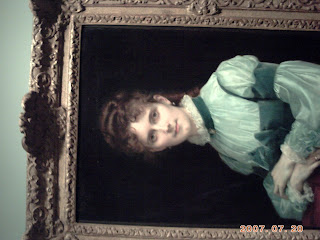

Hello everyone, I would have to say that I was thrilled to go on my first Art Experience at the Yale Art Museum. The time that my children and I spent at the museum was priceless, and their behavior was exceptional. I don't know if anyone could relate to this, but when you walk into a structure that is filled with so much history and inspiration - it does something to you. It gives you this energy that I can't really put into words. It's as if you are witnessing some type of epiphany. I mean to be in the same room with art work that was created from the 15th century is amazing. I took a picture of the one piece of work that captivated me to the point that I had to pull myself away from the woman eyes. The creator was Alexandre Cabanel. It is a french painting called Miss Fanny Clap in 1881. I apologize about the rotation I can't seem to rotate the picture after downloading. But what really got me about this painting was the detail, the lifeless the woman's face. It was amazing how you couldn't even see the actual brush strokes. I researched Cabanel, I found that he was known to paint historical, classical, and religious subjects. He was a well know portrait painter, and if I am not mistaken the portait of Miss Fanny Clap had a romantic story behind it. I believe that her painting was done in secrecy for the purpose of marriage. However, I could be wrong and if I am, please correct me.





